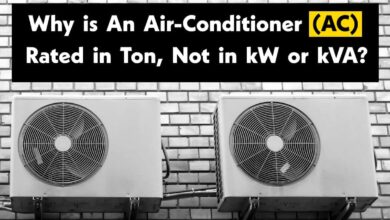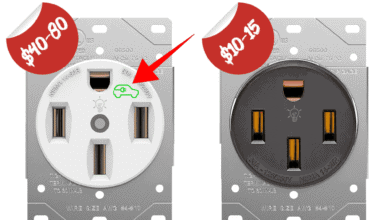Difference Between Serial and Parallel Communication
Key Difference Between Serial and Parallel Communication
In our daily life, we share and receive information (signs, verbal, written) from each other. The devices we use (and their internal components) share this information through electrical signals. But they use various modes of communication to efficiently transfer information. Serial and parallel communications (also known as serial and parallel transmission) are two modes of communication being employed by digital devices.
Both modes can be used to transfer information but they are quite different. and each one of them has their own advantage over the other. Before going into the difference between serial and parallel communication, let’s understand communication first.
Related Post: What is RS232 Serial Communication Protocol and How it Works?
Communication:
Communication is the process of exchange of any useful information between two participants. In Electrical and Electronics engineering, communication means the exchange of any kind of information in the form of the electrical signal between two devices through a transmission medium.
The information being sent could be an audio, video, or any other encoded data. The medium used for the transfer of signal could be a wire (for wired communication) or radio signals (for wireless communication).
The communication can be classified into simplex, half-duplex and full-duplex modes of transmission.
Simplex communication: it is a one-way communication that allows the transfer of information in only one direction. The sender sends the signal and the receiver receives it using a single channel. The receiver cannot transmit back the signal. For example, radio, TV.
Half Duplex communication: It is a two-way communication using a single channel but the information can travel in only one direction at a time. It can either send the signal or receive the signal at a time. For example walkie-talkie
Full Duplex Communication: It is a two-way communication where the information or signal can travel in both directions at the same time. It uses two individual channels for sending and receiving the signal. It is the most common mode of communication being used in the Telecommunication engineering world.
Communication is mainly classified into two main types; Analog and Digital communication.
Analog Communication:
The analog communication is a type of communication where an analog signal is transferred between two devices through a medium. The Analog signal is a variable signal having continuous amplitude and continuous time. it can be transmitted through wired communication or wireless communication.
Digital Communication:
Digital Communication is a type of communication where a digital signal is transferred between two devices through a medium. The digital signal is a signal having discrete amplitude values. The digital signal cannot be transmitted through a wireless medium. Therefore digital communication only uses a wired medium for the transfer of data.
The digital signal can have multiple discrete values but when they are represented using only two possible values of amplitude they are called a binary signal. The binary signal or data exists in the form of bits whose amplitude is either only “0” or “1” corresponding to ground “0” and supply voltage.
The binary data exists in the form of bytes where each byte is made of 8 individual bits. Therefore the digital signal can be sent bit by bit in a sequence or we can send the whole byte at a time. these two modes of communications classify the digital communication into Serial Communication and Parallel Communication.
- Related Post: Difference Between CPU and GPU – Comparison
What is Serial Communication?
Serial communication is a type of digital communication where the data is transmitted bit by bit through a common channel.
Since there is only one channel, the serial communication cannot send the whole byte at once, instead, the 8-bits are sent one by one in series. Therefore the serial communication is relatively slower.
The serial communication is a better choice for long-distance communication because it uses a single channel which requires fewer wires and accommodates very little space. It is very simple to implement, and the data is less affected by interference.
Since it uses only two channels to complete a full-duplex communication, it is far more efficient for communication over long distances with very little installation cost.
There are two types of serial communications; Asynchronous and synchronous transfer (refer to the article “differences between asynchronous and synchronous transmission” for more info). The former method includes the start and stop bit at the ends of byte to identify the starting and ending of a byte while the later uses an external clock to keep the data in sync.
- Related Post: Difference Between Microprocessor and Microcontroller
What is Parallel Communication?
The form of digital communication where multiple bits of data are transmitted over multiple channels at the same time is called parallel communication.
The parallel communication needs separate 8 channels to transfer 8-bits or a byte of data to the receiver. The whole byte is transmitted in a single clock cycle which makes it relatively faster than serial communication. It can send 8 bits of data at the same time the serial mode can send one bit.
But due to multiple channels required for each bit, parallel communication needs multiple wires to carry the data. It is more expensive and requires more space to accommodate those wires.
Each byte sent must be received in the same pattern, which is why it is necessary to design the connectors in a design. This increases the complexity of designing its connectors.
Also due to multiple channels, the data is more vulnerable to interference such as crosstalk and skewing. The former means when the bits skip into another channel while the later means the receiver has to wait for the slowest bit to complete the transfer. In both cases the signal gets distorted. Therefore, it is not efficient for long-distance communication but they are best for short-distance communication between various internal peripherals of any digital system.
Main Differences between Serial and Parallel Communication
| Serial Communication | Parallel Communication |
| The process of transmitting data bit by bit in sequence using a single channel. | The process of transmitting data as a whole byte using multiple channels. |
| It uses a single communication link or wire to either transfer or receives data. | It uses multiple communication links or wires to transfer signals. |
| It only uses one wire for transfer regardless of the number of bits being transmitted. | It uses the same number of wires as the number of bits being transmitted. |
| it accomplishes full-duplex communication using only two channels. | It uses the same number of channels as bits to form half-duplex communication. |
| It needs a start and stop bit or an external clock to synchronize the data. | It does not need to synchronize because the whole byte is received in a single clock cycle. |
| It is slower at a short distance and low frequencies. | It is fast at a short distance and low frequency. |
| It is more efficient for long-distance and high frequency. | It is not efficient for long-distance and high frequency. |
| It is not affected by crosstalk due to a single channel. | It is vulnerable to interference such as crosstalk and skewing. |
| It is design is very simple and cost-effective. | It is expensive having a complex design. |
| The example of serial communications are USB, SATA, I2C, SPI etc. | The example of parallel communications are computer to printer and communication between internal components in embedded systems, |
The parallel communication provides quick and high-speed transmission but at high cost and requires more wires. Thus it is a better choice for short-distance communication to reduce the installation cost. While the serial communication seems slower (and it is) then the parallel communication but it is faster at long distances and at high frequencies.
Related Posts:
- Difference Between RAM and ROM – Comparison
- Difference Between Series and Parallel Circuit – Comparison
- Difference between Inverter and UPS – Uninterruptible Power Supply
- Difference Between Online UPS and Offline UPS – Which One is Better?
- MAX232: Construction, Operation, Types and Application
- How to Make and LED Project with ATMega Microcontrollers?
- How to Program PIC18 Microcontroller in C?













Please how can I calculate loads in a particular house to know the necessary amps that would be suitable for the house eg airconditioners 2.5/1.5 hp water heaters lights and fridge please help me thank you, your are doing a great work.
Hi there,
This calculator will help you to find the total load and required power, voltage and amperes.